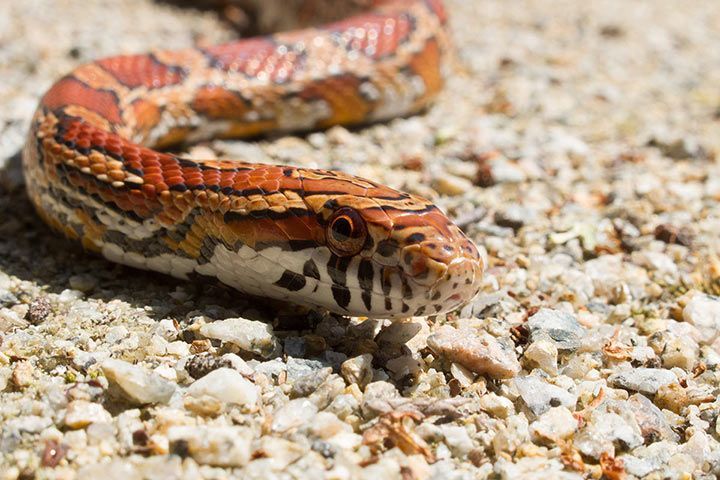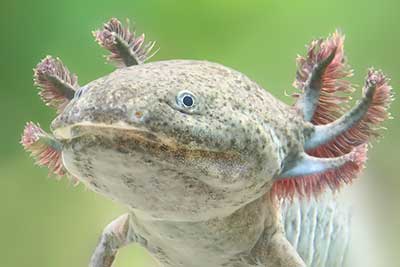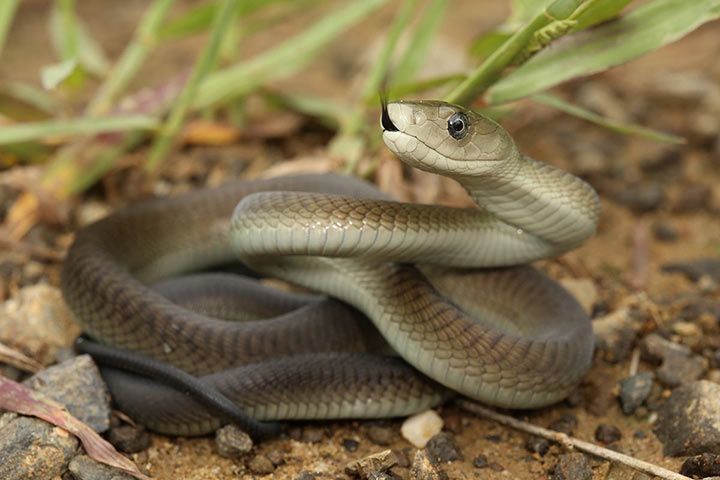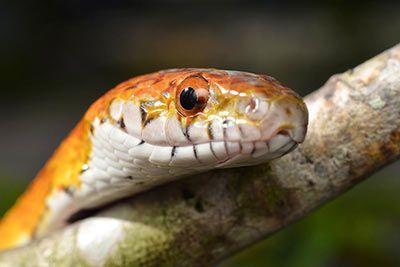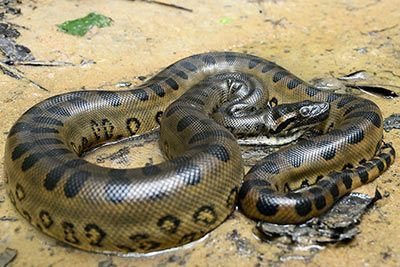Corn Snake
Corn Snake Facts
| Size | 47-59 in (120-150 cm) |
| Speed | Unknown |
| Weight | About 13 oz (370 g) |
| Lifespan | 17 years (female); 32 years (male) |
| Food | Rodents, lizards, birds, eggs |
| Predators | Eagles, hawks, pumas, wolves, bears, dogs, cats |
| Habitat | North America |
| Class | Reptiles |
| Order | Scaled reptiles |
| Family | Colubridae |
| Scientific name | Pantherophis guttatus |
| Characteristics | Saddle patches; bright red-orange coloring |
Main Characteristics
The corn snake is a snake that feeds on small mammals. It is non-venomous and kills its prey by ambushing, entangling, and strangling.
From here you find infos written by animalfunfacts fan Naima!
 Anatomy and Appearance
Anatomy and Appearance
How Do Corn Snakes Look Like?
Corn snakes have black, red and yellow coloring. Breeders select these to create beautiful color variations like “blood red” (red), “snow” (white), “ghost” (gray) and “mandarin” (orange). The regular wild corn snake is orange or gray-red with red saddle patches and a black and white belly.
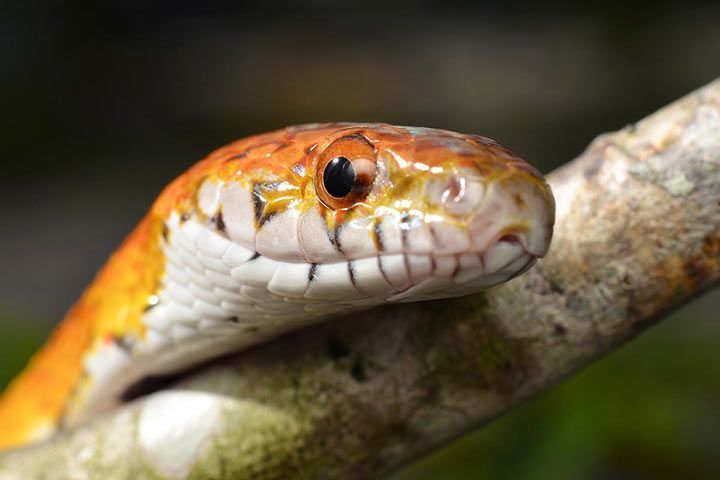
Origin
Where Did the Corn Snake Get Its Name From?
The second word, snake, is easy to explain: they are a kind of non-venomous snake. You can easily tell by their round pupils. But watch out: elapidae belong to the same family but are venomous. The word “corn” either comes from the fact that they often live in corn fields or because their bellies look like corn.
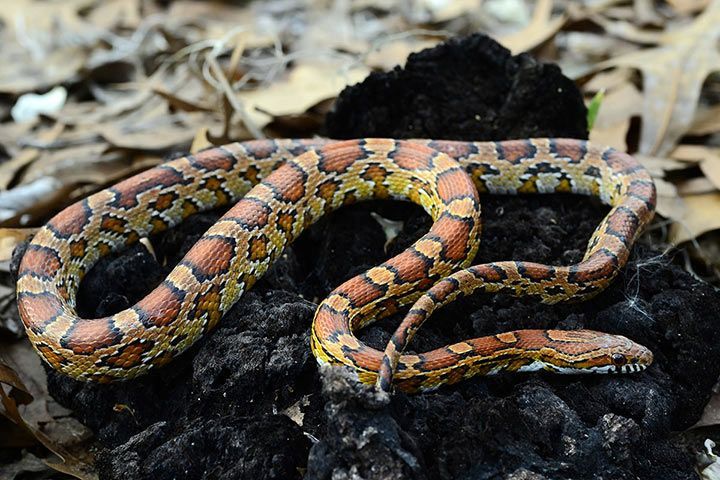
Senses and Abilities
Can Corn Snakes Climb?
Corn snakes can easily climb stairs, but they rarely climb trees. Most often, they lie in barns or simply on the ground.
Reproduction
Corn snakes don’t care for their young. They just leave their eggs. It takes two months for their young to hatch. Shortly before, the soft egg collapses. This makes it easier for them to hatch.
Fun Facts
Corn snakes are popular pets. They eat frozen mice and are easy to keep. They are one of those snake breeds that feel at home in a terrarium and love to slither about.
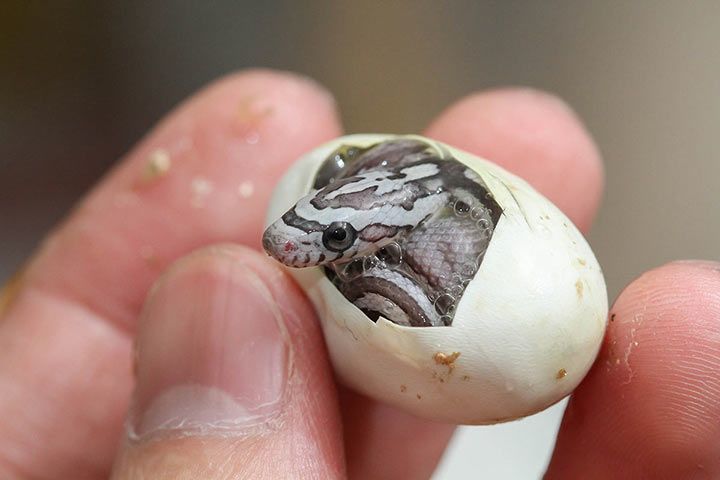
This fact above were submitted by animalfunfacts.net fan Naima. Thanks for your amazing article! Do you want to write a fan fact sheet?
- Find Out More:
- Black Mamba Facts
- Corn Snake Facts
- Rattlesnake Facts
